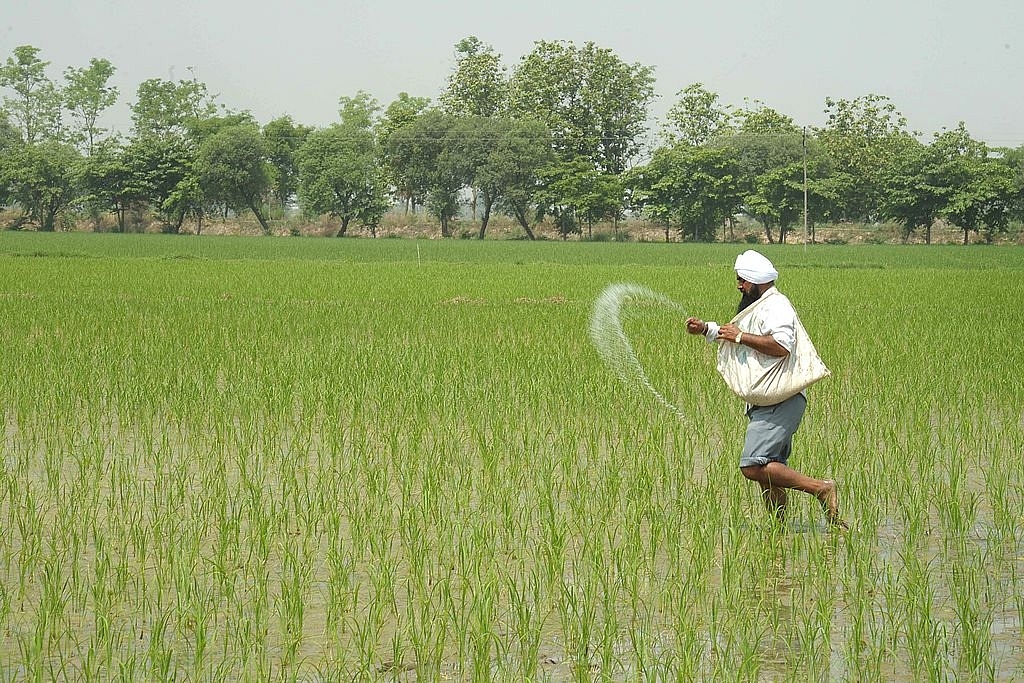Economy
DeMo Effect On Agriculture ‘Small And Insignificant’, Its Growth Story Intact: Niti Aayog

Agricultural reforms need of the hour. Photo credit: <a href="http://www.gettyimages.in/search/photographer?photographer=NARINDER+NANU&agreements=ed%3A8601&agreementtypes=ed&autocorrect=none&editorialproducts=news&excludenudity=true&family=editorial&page=1&phrase=451891050&sort=best">NARINDER NANU</a>/GettyImages
Has demonetisation adversely impacted the economy? If it has, how much bearing it will have on the Gross Domestic Product (GDP) growth? Predictions and analysis vary with different reports and agencies. According to the figures put out by the Central Statistical Office (CSO), the growth will slow down to 7.1 per cent as opposed to earlier projection of 7.6 per cent. Sectors like mining and quarrying, manufacturing, construction, trade, hotels, transport, communication, financial, real estate and professional services all are likely to see a slowdown.
What about agriculture? This is an area which employs half of the country’s workforce. The figures for this sector show a jump in growth compared to last two years which saw back to back droughts. Agriculture and allied sectors are expected to register a growth of 4.1 per cent. Last year it was 1.2 per cent. This is lower than what the government was hoping for (6 per cent) but given the overall uncertainty, this must be satisfying for the government.
Niti Aayog member Ramesh Chand and Consultant Jaspal Singh in their blog on the Aayog’s site have also analysed how the demonetisation has had a small and insignificant impact on agriculture sector. They have chosen four parameters -- area sown, crop pattern, productivity and market -- and compared the data with last year.
Here is a brief summary of their analysis for each parameter from the report:
Area sown
- Net sown area under rabi crops exceeded the normal area by 2.77 per cent and area sown last year by 6.86 per cent, as of the week ending 30 December.
- Normally rabi sowing is completed on 88 per cent area by 30 December. This year it has been completed on more than 91 per cent area.
Crop-wise effect
- Compared to the corresponding period last year wheat is sown on 7.7 per cent higher area.
- Area under pulses and oilseeds is higher than normal for the corresponding period by 11.2 and 1.7 per cent respectively.
- Net area under rabi has increased by 15.7 lakh hectare over normal area and 37.4 lakh hectare over last year.
Effect on productivity
- According to the data on first point sale of fertilizer, its offtake during the current rabi season till 21 December was lower than the fertilizer offtake in the corresponding period during 2014-15 and 2015-16 by 7.47 per cent and 7.0 per cent.
This can result in 1.05 per cent decline in crop output and 0.75 per cent decline in agricultural output but the blog cautions that these point of sales statistics are raw and likely to increase with more reportage by other fertiliser companies.
Effect on prices
Prices of agricultural commodities dropped as too less money was chasing too many goods. This was especially true in the case of perishable commodities and their producers did suffer due to price drop. Seasonal glut and bumper crops were other two reasons for price drop. Total loss to farmers during November and December is estimated to be around 0.26 per cent however, it is not yet certain whether this was due to demonetisation or usual seasonal glut.
Conclusion
Based on above changes, the duo concludes that the growth rate for crop sector for the whole year will come around 7.48 per cent and farmers’ income in year 2016-17 will witness an increase of 5.8 per cent in real terms.
You can read the complete blog on Niti Aayog website here.
Support Swarajya's 50 Ground Reports Project & Sponsor A Story
Every general election Swarajya does a 50 ground reports project.
Aimed only at serious readers and those who appreciate the nuances of political undercurrents, the project provides a sense of India's electoral landscape. As you know, these reports are produced after considerable investment of travel, time and effort on the ground.
This time too we've kicked off the project in style and have covered over 30 constituencies already. If you're someone who appreciates such work and have enjoyed our coverage please consider sponsoring a ground report for just Rs 2999 to Rs 19,999 - it goes a long way in helping us produce more quality reportage.
You can also back this project by becoming a subscriber for as little as Rs 999 - so do click on this links and choose a plan that suits you and back us.
Click below to contribute.
Latest